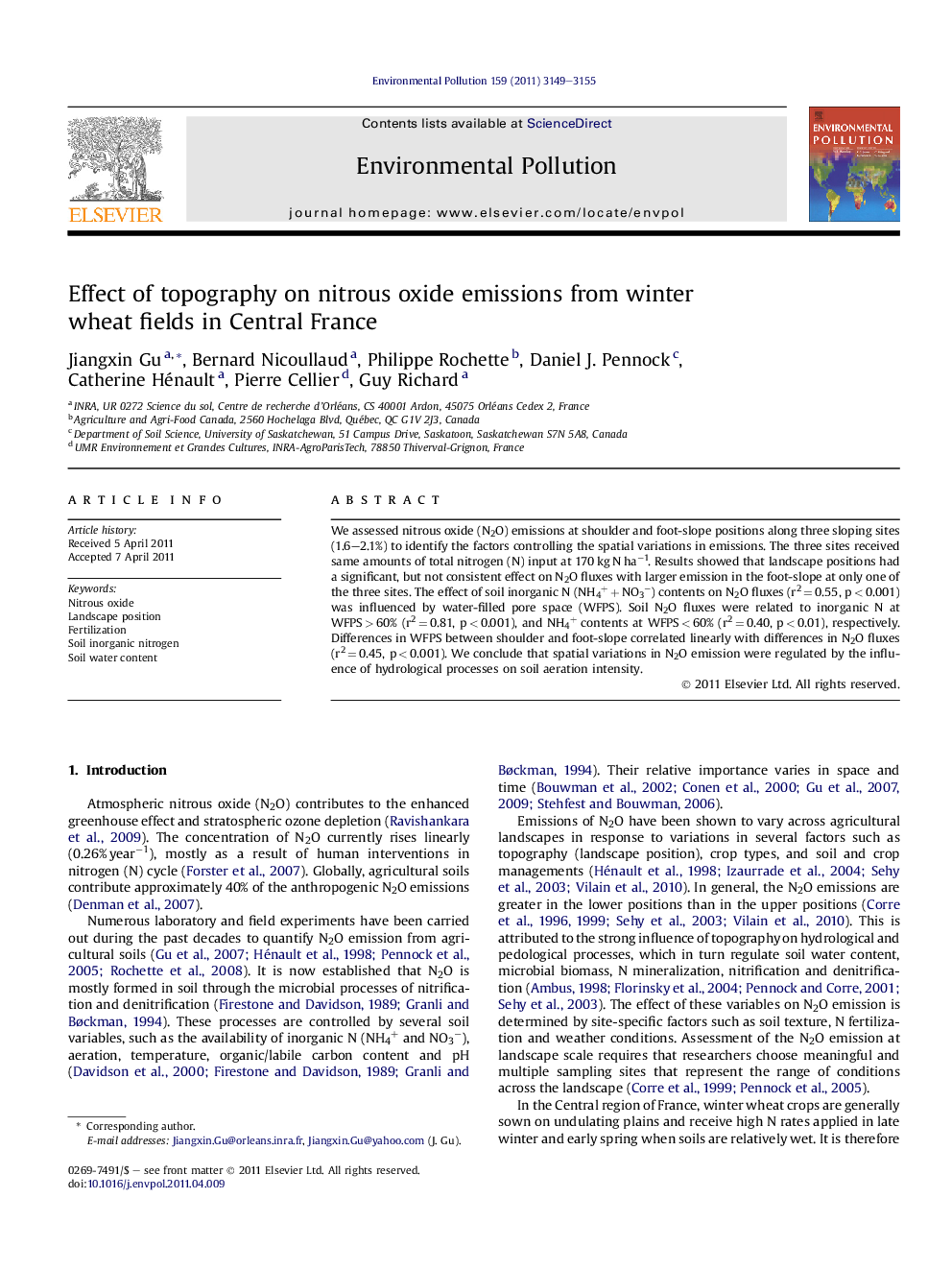| کد مقاله | کد نشریه | سال انتشار | مقاله انگلیسی | نسخه تمام متن |
|---|---|---|---|---|
| 4425350 | 1309101 | 2011 | 7 صفحه PDF | دانلود رایگان |

We assessed nitrous oxide (N2O) emissions at shoulder and foot-slope positions along three sloping sites (1.6–2.1%) to identify the factors controlling the spatial variations in emissions. The three sites received same amounts of total nitrogen (N) input at 170 kg N ha−1. Results showed that landscape positions had a significant, but not consistent effect on N2O fluxes with larger emission in the foot-slope at only one of the three sites. The effect of soil inorganic N (NH4+ + NO3−) contents on N2O fluxes (r2 = 0.55, p < 0.001) was influenced by water-filled pore space (WFPS). Soil N2O fluxes were related to inorganic N at WFPS > 60% (r2 = 0.81, p < 0.001), and NH4+ contents at WFPS < 60% (r2 = 0.40, p < 0.01), respectively. Differences in WFPS between shoulder and foot-slope correlated linearly with differences in N2O fluxes (r2 = 0.45, p < 0.001). We conclude that spatial variations in N2O emission were regulated by the influence of hydrological processes on soil aeration intensity.
► Soil inorganic N content was the major factor controlling N2O emission.
► Soil water content influenced the effect of soil inorganic N content on N2O emission.
► The position-by-site interactions affected the cumulative fluxes significantly.
Journal: Environmental Pollution - Volume 159, Issue 11, November 2011, Pages 3149–3155